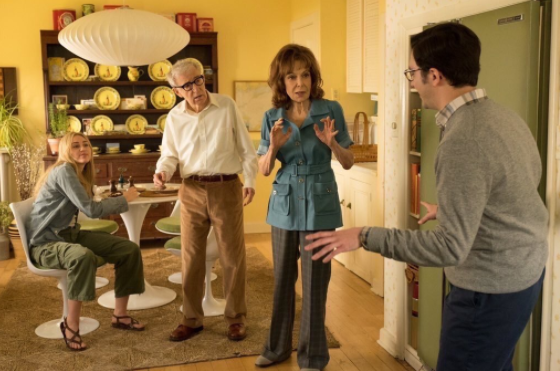“I was just thinking maybe I should dump this whole idiotic television series thing and, you know, give one last shot to writing the book.” So concludes Woody Allen’s one-off TV series known as Crisis in Six Scenes. From the start, it was probably doomed to fail, as an auteur collaboration with Amazon Studios doesn’t exactly scream “artistic integrity.” But more than that, a non-European writer-director of Allen’s nature was never designed for the medium of television.
Paired with Allen’s increasing out-of-touchness with the plight of the modern man (why do you think all of his work has been set in the past of late?), Crisis in Six Scenes, for the most part, feels like a contractual obligation to be fulfilled. Sure, there are moments of goodness and solid gold humor–as there is in most of Allen’s projects–but, largely, it comes across as Miley Cyrus playing a revolutionary by putting on a poncho.
The very first scene of episode one instantly indicates that Allen has no interest in placating audiences by making things “easy” for them to watch. Hence, a lengthy interaction between Sidney Munsinger (Allen)–pen name: SJ Munsinger–and his barber as the two talk about, among other topics, how Sidney will never look like James Dean, a conversation that comes up when he proffers a photo of the icon for his barber to cull inspiration from for his haircut.
After this grooming errand, Sidney returns home to his wife, Kay (Elaine May, in typical space cadet form), a marriage counselor who is just wrapping up a session with her clients, a husband and wife who have nothing in common other than liking guacamole. Their surrogate son, of sorts, Allen Brockman (John Magaro), is staying with them while his parents–longtime friends of the Munsingers–await a first meeting with Allen’s fiancée, Ellie (Rachel Brosnahan), who Sidney takes pride in being able to say he introduced to Allen.
The presence of Allen is the most excitement the Munsingers have seen in awhile, other than a newscast about the woman hunt for a dangerous revolutionary named Lennie Dale (Miley Cyrus) after she was able to flee, through means of violence, from the custody of authorities. As episode one concludes with Sidney realizing he forgot to turn the burglar alarm on, episode two commences with Lennie breaking in to their house to seek refuge, relying on her connection to Kay (Lennie’s grandmother took Kay in when she was a youth) to be permitted to stay. This addition to their number of mounting houseguests is much to Sid’s dismay, especially since Lennie seems to enjoy eating all of his favorite snacks.
As a member of the Constitutional Liberation Army, Lennie’s radicalism is in direct contrast to the cud-chewing complacency of Sid’s existence, which Lennie has no problem calling him out on. For instance, “You’re like millions of other passive Americans,” is an accusation that remains as relevant today as it was in the 1960s. And, yes, it’s all too appropriate that while Sid resides in his upstate New York ivory tower away from all the chaos punctuating the so-called revolution, he at least occasionally ventures into the city to attempt being a successful TV writer.
Nonetheless, Lennie sees him only as a “stooge of the oligarchy.” Her rebellious attitude naturally attracts Allen, who begins questioning his impending nuptials to Ellie. And while Crisis in Six Scenes is faithful to the somewhat screwball genre that has behooved Allen in the past (Manhattan Murder Mystery comes to mind), it is ultimately too frothy to stand up against something like, say, one of Allen’s most cited inspirations, Ingmar Bergman, who prospered in the medium of television with 1973’s Scenes From A Marriage.
Regardless of this, for every five to ten “bad” Woody Allen projects, there is bound to be one of solid gold somewhere in between. Until then, consider emulating Lennie’s behavior during election season.






















